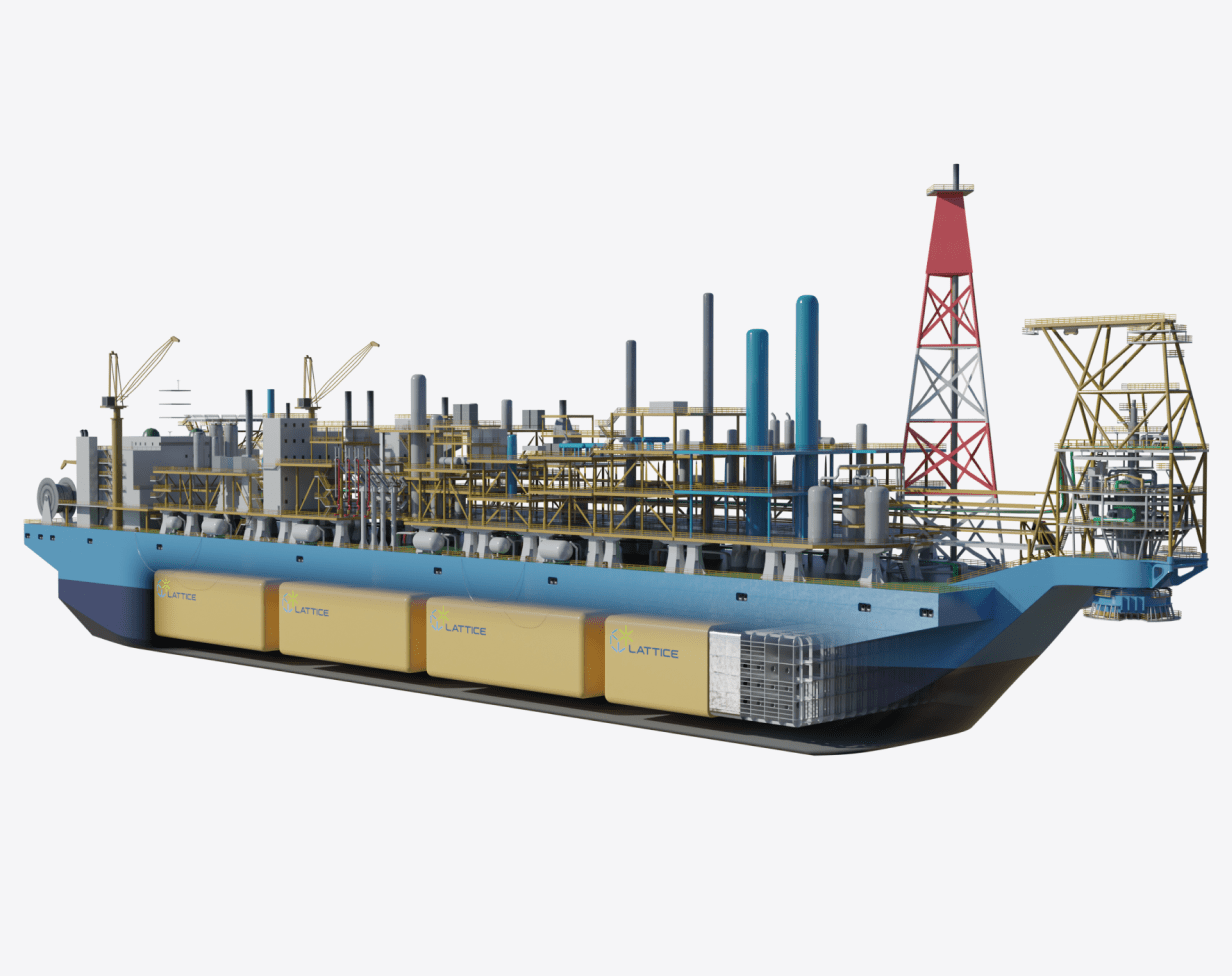Floating Storage Units (FSUs) have long been used in remote or deep-water locations where subsea pipelines are not cost effective. Traditionally used for production and storage of oil (FPSOs) and natural gas (FLNGs/FSRUs), floating units are now gaining an important role in the developing decarbonization value chains as LCO2 storage and injection units and as LNH3 storage units to reduce value chain costs and speed up project timelines.

The combination of topside process equipment and a requirement for large-scale liquefied gas containment makes FSUs both complex and expensive. Either permanently moored offshore, with constant marine environmental exposure, or positioned alongside a jetty, the physical size and shape of the FSU plays a crucial role – both from a technical and financial point if view. A more compact unit not only lowers the building/retrofit cost, but also enables a smaller size mooring configuration or jetty and reduces overall OPEX of the asset. Optimization and scalability of the containment system are key factors in enabling more compact and cost-effective designs, both of which are accommodated by the LPV technology. The free-shape and free-size containment solution, capable of handling pressure ratings of 30+ barg, enables large-scale, flexible storage of any liquefied gas and is a key enabler in bringing down the overall value chain costs.
The LPV offers asset owners and designers the opportunity to optimize the vessel hull geometry and operational performance without impacting the storage capacity. The flexible LPV design can be tailored to fit any optimized hull shape, thereby enabling a more compact and cost-efficient vessel. Alternatively, the LPV can be designed to fit into an existing hull design, increasing storage capacity through a more superior volume utilization than cylindrical or bi-lobe tanks. Both options offer substantial CAPEX/OPEX savings or increased revenue streams, bringing down cost per m3 stored and processed.
Contact us to see how we can improve your fuel tank performance.
The tank design is capable of handling pressure ratings of 30+ barg and temperature ratings from -253 to +45 degC, offering asset owners full flexibility.
Optimize your storage tank configuration with LPV to ensure the most compact and efficient hull shape, saving both CAPEX and OPEX, whilst maintaining volumetric payload capacity.
Within existing cargo hold spaces to increase vessel payload capacity and increase revenue streams.
The free-shape, free-size LPV design allows for limitless scalability and reduced number of tanks and related equipment and systems, enabling economies of scale and bringing down cost per m3 stored.

Approved by ASME, all major Classification Societies, US Coast Guard